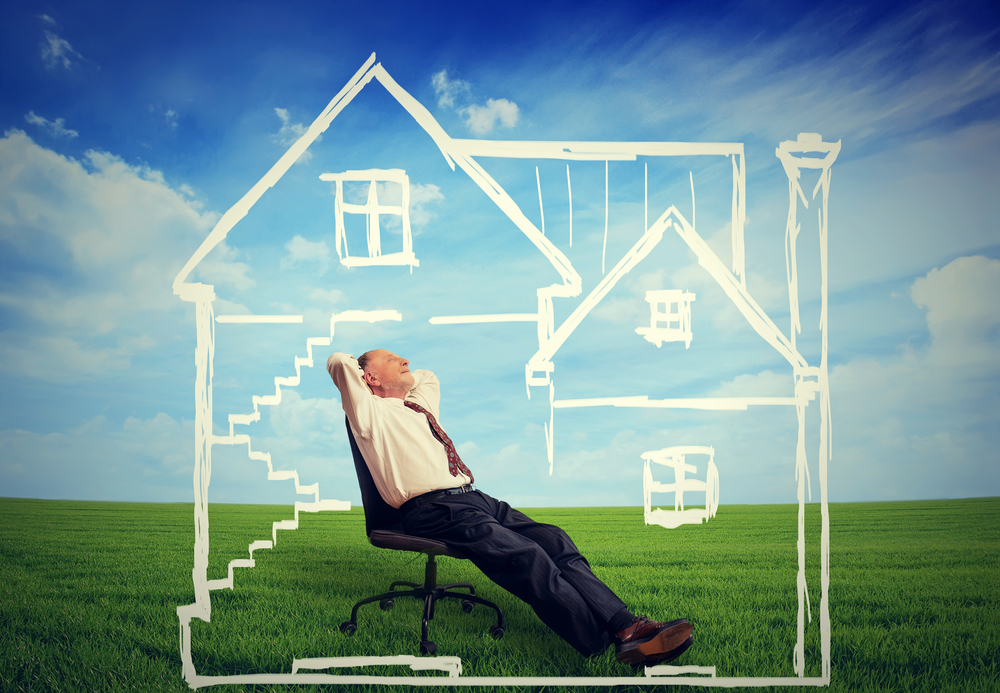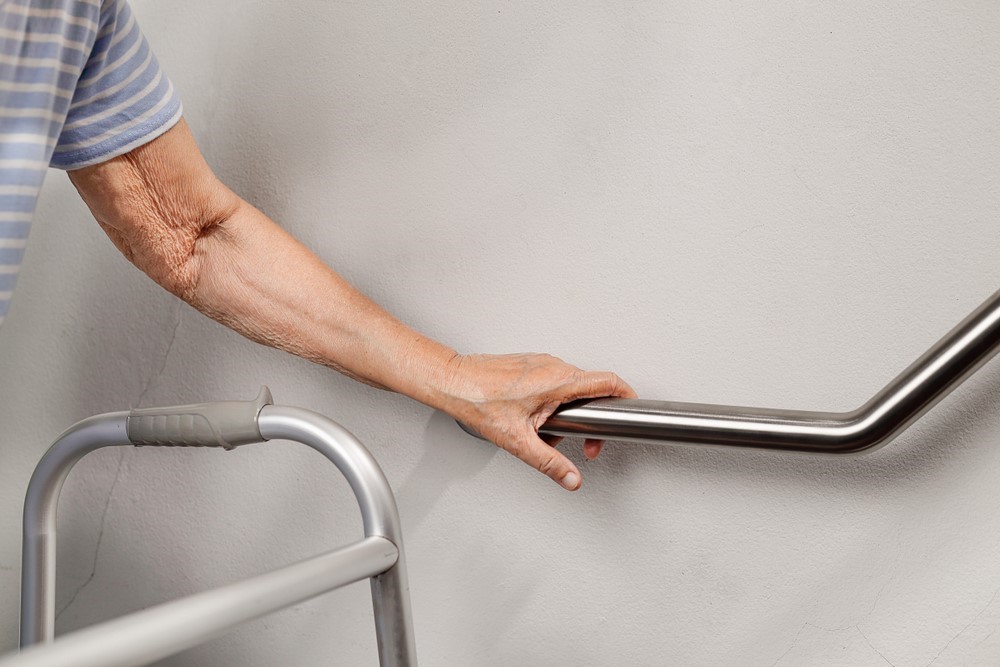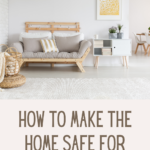
Updated April 20, 2021
We typically think of the home as a fairly safe environment but that is never completely true. Accidents at home are incredibly common. Some lead to injury, while others can even be fatal. We often take steps to make sure children are safe at home. It’s time to make the home safe for seniors too.
The steps here are different than child-proofing your home. Most seniors are competent and don’t need coddling in the way you would a young child.
Even so, some changes can dramatically reduce the risk of accidents. They can also help seniors feel more confident and secure in their own homes. This is important – as many seniors want to stay in their homes as they age. For this to work, the home environment needs to be low-risk.
The Risk of Injuries at Home
Before we focus too much on how you can make the home safe for seniors, let’s talk about the risks.
Each year, around 3 million seniors visit emergency departments because of falls. Estimates suggest that more than 25% of seniors fall ever year and many don’t tell their doctor. Those are frightening statistics, as a single fall dramatically increases the chance of a subsequent one.
Plus, even when falls do not cause long-term physical injury, they can lead to behavior changes. The senior may become scared of falling, potentially leading to a decrease in activity. Ironically, that situation will also mean that a person becomes weaker and serves to increase their chances of falling again.
The significance of falls and other household injuries reinforces the importance of making sure your home is a safe environment.
Thankfully, there are many small changes that you can make around the home to make it a safer place for seniors. In many cases, these changes are things that you might overlook otherwise but they can make a huge difference. Just making simple changes now may be enough to prevent a fall and even save the life of a senior.
How You Can Make The Home Safe For Seniors
If you want a visual guide to making the home safe, skip to the end of this post and check out the infographic. Or, read on for more in-depth ideas.
1. Clear Clutter
Anything on the floor is something that the senior can trip over, making clutter a serious problem. Keeping the floor as clear as possible reduces the risk of tripping.
We’re not just talking about messy houses either. Many of us like having decorative and functional items around the house, like vases or small tables. Anything that’s difficult to see from a distance could be a trip hazard.
It’s often best to keep areas as clear as possible. Make sure there is enough space between things for seniors to move with ease, especially when they’re tired or don’t have their glasses on.
2. Install Grab Bars

Grab bars are one of the easiest changes that you can make to your home itself. These provide extra leverage and support. They’re perfect for when seniors need to get up from sitting or in the bathroom.
These bars come in various styles. The most resilient screw into the wall, so you can be confident that they’ll take the senior’s weight. These bars are one example of the style. There are various lengths, including 12, 16, and 24 inches. Some are even bent, like the one in the image above.
If you can’t modify the home in this way, you could look for suction grab bars instead, like these ones. This particular product gets exceptional reviews and has indicators to show when the bar is fastened well.
Even so, you should always be careful with suction grab bars. There’s always the risk that they’ll lose their grip – and some reviewers have experienced this problem.
If the senior needs to put their full weight on the bars, look for ones that are screwed into the wall. Make sure that they’re installed well too. Otherwise, the bars can easily cause issues rather than helping.
3. Use Non-Slip Mats and Be Careful With Rugs
Floor coverings are sometimes used to make things look better and sometimes to provide more grip. Either way, they can easily become hazards. Family members might trip over the edge of a rug or perhaps it skids a little under their feet. Even if the movement is only slight, it could be enough to throw the senior off their balance and lead to a fall.
It’s often best to avoid rugs entirely. If you need to use them, perhaps because the floor itself is slippery, then make sure that they’re well-secured.
Non-slip mats are a useful choice in the bathroom, as the floor is often slippery and the risk of falls is high. Using a non-slip mat and a grab bar in the same bathroom truly helps to make the home safe for seniors.
However, it’s important that you choose the mat carefully and test it yourself before the senior uses it.
Just like with grab bars, the wrong non-slip mat can be worse than none at all.
Be sure to read the instructions carefully and only use the mat in the places and manner that the company recommends. This helps you to avoid any unexpected problems.
There are two styles to look out for. The first is like this product and goes inside the shower or bath. The second is like this product, is more absorbent, and is designed for the bathroom floor. You might use both types in the same bathroom.
4. Focus on Senior-Friendly Appliances
Some appliances are more senior-friendly than others. For example, in the kitchen, you might choose an induction stovetop, as this dramatically reduces the risk that clothing will catch fire.
Also look for appliances that aren’t too complicated and are easy to operate. Large buttons and easy-to-read screens can help here, as they mean that seniors with poor eyesight can still use the appliance.
5. Think About the Height of Items
Having things at the right height around the home can be incredibly helpful. This means less bending and straightening for seniors, and reduces strain on their bodies.
To do so, you might need to raise the height of some items. For example, placing a washing machine or dryer on a platform makes it much easier to get washing in and out.
The height of beds and chairs are relevant too. You can find small products called risers that go under each leg to provide extra height (like these ones). Good quality ones are sturdy and can bear a decent amount of weight.
Increasing furniture height like this makes it much easier for seniors to get up and down. This reduces the risk of injury and makes life easier all around.
6. Improve the Lighting
Lighting is more important than you might realize. When a room is well-lit, it’s easy for people to see where hazards are an avoid them. This is critical for seniors, as declining eyesight, memory, or cognition can make rooms much more difficult to navigate.
Think about lights for night time too, in case the senior needs to visit the bathroom. Some people use motion-activated lights or small nightlights that are on the whole time. The trick is to find approaches that work for your house and needs.
7. Pay Attention to What Works and What Doesn’t
There are many ways to make the home safe for seniors and they mightn’t all apply to your situation. Each person has their own set of strengths, weaknesses, and needs, so some solutions will work better than others.
The best approach is to pay attention to where seniors are struggling. Once you have a sense of where the issues are, you can start to look for things that will help.
The site Health Products for You is actually a fantastic place for ideas. This site features many products that are relevant to seniors and caregivers.
It’s a great site to visit even if you don’t plan to buy anything, as they have many useful categories and subcategories. For example, you could look at the category Low Vision Aids to get a sense of ways to help a person with poor vision.
Feeling Overwhelmed?
Check out our Caregiving Consulting service for personalized support and guidance.


Leave a Reply